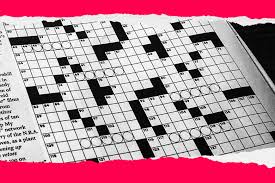
Mastering the Clues: Forming a Union NYT Crossword Made Simple
Forming a union nyt crossword can feel tricky at first, but it’s easier than it looks once you understand the patterns. If you’ve ever stared at a New York Times crossword and wondered how to solve clues like “forming a union,” you’re not alone. Many solvers struggle with these types of clues because they rely on both word knowledge and some creative thinking. A “forming a union” clue usually points to words or phrases connected to joining, uniting, or coming together. By learning common answers and seeing how the NYT crossword works, you can quickly get the hang of solving these puzzles. It’s also fun because each puzzle teaches you new words and helps your brain stay sharp. Even if you’re new to crosswords, understanding clues like forming a union will make the whole experience much more enjoyable.
When tackling forming a union nyt crossword clues, start by thinking about the simplest words that mean joining or uniting. Words like “merge,” “combine,” or “ally” are often used in crosswords. Next, pay attention to the number of letters required by the puzzle. Sometimes the answer is short and simple, and sometimes it’s a longer phrase. You can also look for crossing letters from other clues to help confirm your answer. Another helpful tip is to practice often. The more NYT crosswords you do, the more you start to notice patterns in clue-writing. Puzzles often use the same types of wordplay, so you’ll get better at spotting them. Remember, forming a union nyt crossword isn’t just about memorizing answers—it’s about thinking creatively, spotting patterns, and enjoying the challenge.
Understanding Forming a Union Clues
Forming a union nyt crossword clues are a type of “action” clue. They ask you to think about what it means to join or unite. The puzzle makers often choose words that are short, common, and easy to recognize once you know the pattern. For example, “merge” is a popular answer because it is simple and fits well in many puzzles. Other words like “ally” or “join forces” can also appear. When you understand the meaning behind the clue, you don’t have to guess blindly. The best strategy is to think about what words you use in daily life when talking about working together or forming a union. This makes it easier to spot the correct answer quickly.
Sometimes the NYT crossword will use wordplay for forming a union clues. The puzzle may hint at combining letters or joining two small words to form a bigger word. Recognizing these patterns comes with practice. The more puzzles you do, the better you become at spotting these tricks. Remember, forming a union nyt crossword clues are meant to challenge your brain, but they are never impossible. They are designed to be fun and make you think creatively.
Tips to Solve Forming a Union NYT Crossword
To solve forming a union nyt crossword, start with the simplest approach. Think of words that directly mean joining, combining, or uniting. Words like merge, ally, unite, join, or combine are common answers. Check the number of letters needed in the box, as this helps you pick the right word. Look at crossing letters from other clues for hints. If you are stuck, skip the clue and solve others first. Often, crossing letters from later answers will help you return and solve the forming a union clue easily.
Another useful tip is to read the clue carefully. Sometimes forming a union clues are tricky because they use indirect language. For example, instead of saying “join,” the clue may say “form an alliance” or “come together.” Understanding synonyms and alternative phrases is very helpful. Also, practicing regularly improves your intuition. The more NYT crosswords you solve, the more familiar you become with the types of words and phrases the puzzle writers like to use.
Common Words Used in Forming a Union NYT Crossword
The NYT crossword often uses common words for forming a union clues. Some of the most frequent answers include:
- Merge
- Join
- Unite
- Ally
- Combine
- Fuse
- Pair
Longer phrases that sometimes appear include:
- Come together
- Join forces
- Act as one
Knowing these words and phrases can save you a lot of time. When you see the clue forming a union, your mind will automatically think of these options. Over time, you will memorize these patterns and solve these clues faster than ever.
How to Use Crossing Letters to Solve Puzzles Faster
Crossing letters are one of the most powerful tools for solving forming a union nyt crossword. When you solve other clues that intersect with the forming a union clue, the letters you fill in can guide you to the right answer. For example, if you already have the first and last letters, you can often guess the middle letters more easily. This is especially helpful if the clue has multiple possible answers. Don’t be afraid to make an educated guess and test it with crossing letters. Sometimes trying one word will make all the other clues fall into place.
Another way to use crossing letters is to focus on the vowels first. Many forming a union answers contain common vowels like A, E, or O. Filling these in can narrow down your choices quickly. The key is to stay flexible and use the letters you know to guide your guesses.
Tricks to Think Like a NYT Crossword Writer
Thinking like a crossword writer can help you solve forming a union nyt crossword clues faster. NYT puzzle makers love words that are simple, common, and versatile. They often choose answers that fit well in many puzzles. Understanding their style makes it easier to guess correct answers. They also use wordplay, puns, or double meanings. Practicing different puzzles exposes you to these tricks. After a while, spotting forming a union clues becomes more natural.
A good trick is to always consider both the literal and the figurative meaning of a clue. Sometimes forming a union clues might hint at something less direct, like teamwork or partnership. Training your brain to look for both types of meanings improves your solving skills.
Why Practicing Forming a Union Clues Makes You Smarter
Doing forming a union nyt crossword regularly is more than just fun—it’s good for your brain. Puzzles improve vocabulary, memory, and problem-solving skills. They also teach patience and persistence. When you practice forming a union clues often, you begin to recognize patterns and common answers. This skill carries over to other types of puzzles and even real-life problem-solving.
Crosswords also encourage creative thinking. Forming a union clues require you to think about different ways to describe joining or uniting. You learn new words and expressions, which improves your communication skills. Over time, these small mental exercises build stronger cognitive abilities and keep your mind active.
Conclusion
You don’t have to solve forming a union nyt crossword alone. Many people enjoy puzzles with friends or family. You can also use apps or online platforms to practice. Setting a timer can make it more exciting, turning it into a fun challenge. Another way is to keep a notebook of words and phrases you encounter often. Reviewing this list before solving puzzles helps you solve clues faster.
Remember, the goal is to enjoy the puzzle while learning. Each forming a union clue is like a mini puzzle within the larger puzzle. Celebrate small victories when you solve them correctly. Over time, your confidence grows, and puzzles become even more fun.
FAQs
Q: What does forming a union nyt crossword usually mean?
A: It usually means joining, uniting, combining, or coming together.
Q: What are common answers to forming a union clues?
A: Common answers include merge, join, unite, ally, combine, fuse, pair, or longer phrases like come together or join forces.
Q: How can crossing letters help solve forming a union clues?
A: Crossing letters from other clues can confirm or guide your guesses, making it easier to find the correct answer.
Q: Is there a trick to solve forming a union nyt crossword faster?
A: Yes, think of simple words for joining, check the number of letters, use crossing letters, and consider both literal and figurative meanings.


